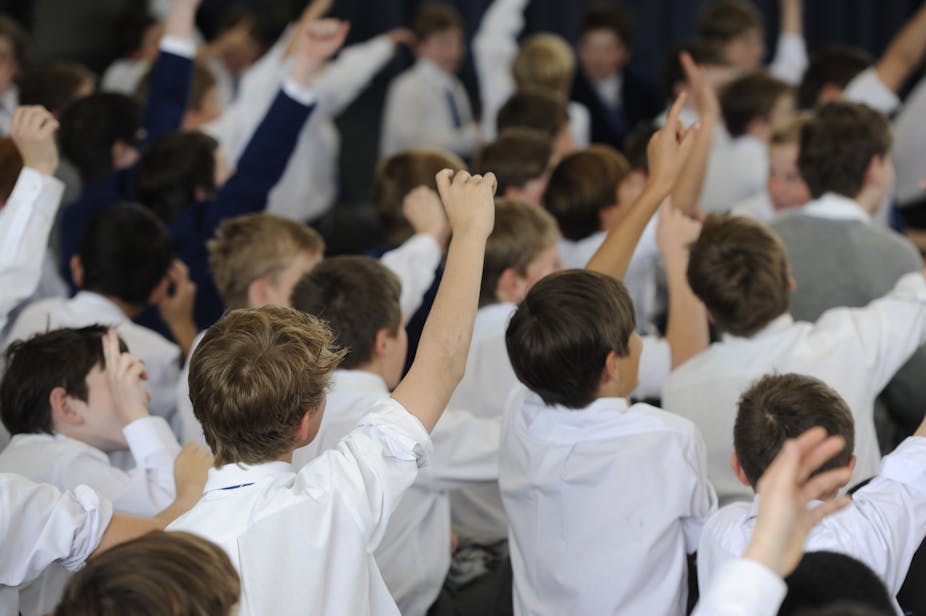The Australian Primary Principals Association (APPA) submission to the review of the Australian National Curriculum has stated the primary curriculum is overcrowded and some complex content is unnecessary.
This criticism is really the APPA advocating for a position that it has held from the earliest days of the development of an Australian Curriculum: that content should be limited to allow a focus on literacy and numeracy development.
Primary and secondary school are different
What we are seeing here is the public playing out of the debate on the difference between primary and secondary schooling. The APPA submission argues that primary schools have a primary responsibility to help students become literate and numerate, with a bit of science and social education mixed in.
There is a tension between the professional values of developing the child and the new direction of policy that sees education as a key driver of economic growth. Here students’ interests are intertwined with economic independence - not to be ignored perhaps, but not everything.
The public expectation of subject mastery introduces another tension. We need to remember that the origin of the Australian National Curriculum was partly out of concern about the teaching of history and science. The response was to ensure that foundational skills in these subjects were taught in primary school. Other subjects have since jumped at the opportunity to be included.
What is happening here is a conflict between primary educators’ traditional motivation for developing the child and secondary educators’ focus on subject specialisation. With increasing focus on our performance internationally in maths and science, in addition to literacy and numeracy, as well as the annual anxiety about senior secondary results, subject rankings and university entrance, a concern for content is natural. After all, high schools are judged and chosen on how well they prepare students for this endgame. That primary educators have anxiety about this is equally natural.
To resolve this conflict, we need a broader discussion about the nature and purpose of schooling.
Complicating the issue is the impact of the public reporting and ranking of schools based on their literacy and numeracy results on the MySchools website. These high-stakes tests have been shown to place a lot of stress on students, narrow the curriculum in primary schools and lead to school residualisation. In such an environment, any content that distracts from what schools are judged upon becomes superfluous and a distraction.
Principals have to balance this consideration with a concern for content knowledge. That confronts them with an eternal contradiction.
A free or a prescribed curriculum?
At the end of the day curriculum is a state or territory responsibility. Historically the Australian education landscape is characterised by varying degrees of two extremes in curriculum cultures. At one end is the more proscriptive and syllabus-like approach. At the other end is a more open approach.
In the former content is prescribed. In the latter broad areas are defined and teachers choose the specific content with reference to their students. There are advantages and disadvantages in both extremes.
The Australian Curriculum attempts to resolve this difference in cultures. However, that is another point of tension. In fact, the very idea of an Australian curriculum is misleading.
The national “statement” has now been agreed through consultation and agreement between the jurisdictions. However, the jurisdictions then interpret this in relation to their culture.
NSW has developed a specific syllabus that matches the state’s education culture, emphasising what it sees as important. WA has done likewise. Oddly, the states emphasise different things - for example, the Batavia is highly regarded in WA but hardly touched in NSW. At the other extreme, the ACT has kept its very open curriculum framework and created links to the Australian Curriculum.
What’s this really all about?
In the end, this is all part of the great distraction: unleashing a culture war at the expense of transformative social policy. If we look at the extensive data produced for the Gonski review and The Conversation’s recent series on class we see that inequity is entrenched in our education system. A focus on the curriculum is a distraction and an excuse not to address these bigger social issues. It makes the name of the review “students first” seem Orwellian.
The submissions and reports for the Gonski review have disappeared from the federal education department website. The report itself can only be found buried in an archive for “historical purposes only”. That perhaps suggests what is really happening here.

